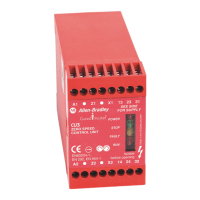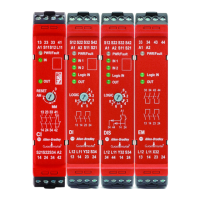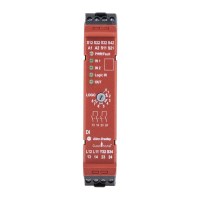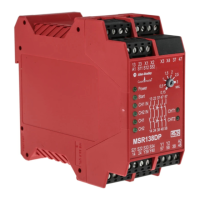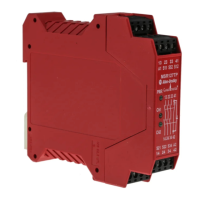Rockwell Automation Publication 440R-UM010C-EN-P - September 2016 13
Chapter 3
Power, Ground, and Wire
Wiring Requirements and
Recommendation
• Allow for at least 50 mm (2 in.) between I/O wire ducts or terminal
strips and the relay.
• Route incoming power to the relay by a path separate from the device
wiring. Where paths must cross, their intersection must be
perpendicular.
• Do not run signal or communications wiring and power wiring in the
same conduit. Route wires with different signal characteristics by
separate paths.
• Separate wiring by signal type. Bundle wiring with similar electrical
characteristics together.
• Separate input wiring from output wiring.
• Label wiring to all devices in the system. Use tape, shrink-tubing, or
other means for to label wires. Colored insulation can also be used to
identify wiring by signal characteristics. For example, use blue for DC
wiring and red for AC wiring.
Wire Size
Each terminal can accommodate copper wire with size from 0.2…2.5 mm
(24…14 AWG). Use copper that withstands 60/75 °C.
Terminal Torque
Terminals must be torqued to 0.4 N•m (4 lb•in).
WARNING: Before you install and wire any device, disconnect power to the
system.
WARNING: Calculate the maximum possible current in each power and
common wire. Observe all electrical codes that dictate the maximum current
allowable for each wire size. Current above the maximum ratings cause
wiring to overheat, which can cause damage.
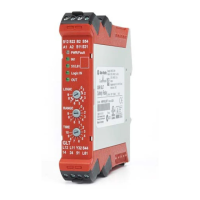
